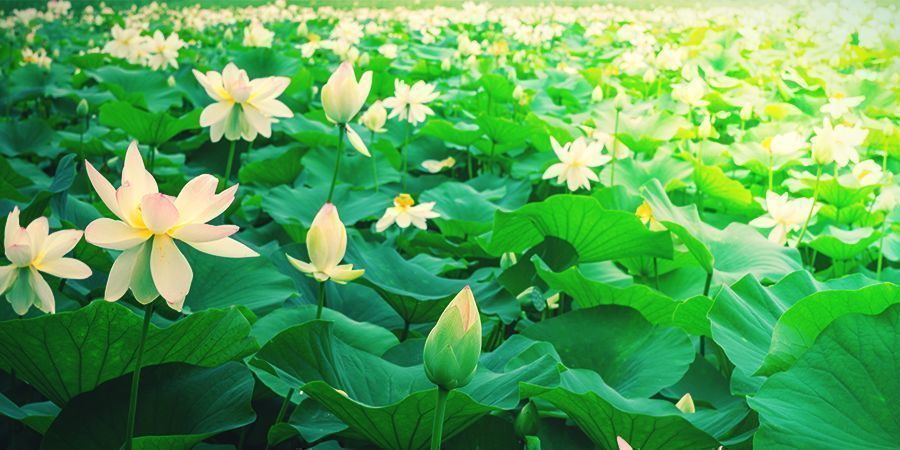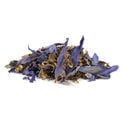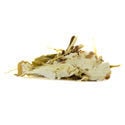-
Seedshop
-
Feminized
Cannabis seeds -
Autoflowering
Cannabis Seeds -
Regular
Cannabis Seeds -
F1 Hybrid
Cannabis Seeds -
CBD
Cannabis Seeds -
Zamnesia
Cannabis Seeds
-
Top 10’s
- Top 10 Feminized Seeds
- Top 10 Autoflowering Seeds
- Top 10 Regular Seeds
- Top 10 USA Cannabis Strains
- Top 10 Zamnesia Seeds
-
Favourites
- Beginner Strains
- Below 1% THC
- Classic Cannabis Strains
- Cup Winners
- F1 Hybrids
- Fast-Flowering Strains
- High CBD Strains
- High THC Strains
- Mix Packs
- Zamnesia Exclusive Collabs
-
-
Headshop
-
Vaporshop
- Spare Parts & Accessories
- AirVape X
- AirVape XS GO (2021)
- Arizer Air MAX
- Arizer Extreme Q
- Arizer Solo 2
- Arizer V-Tower
- Arizer XQ2
- Boundless CFC 2.0 Vaporizer
- Boundless CFX
- Boundless TERA (V3)
- CRAFTY+
- DaVinci IQ2
- DaVinci IQC
- DaVinci MIQRO
- Dr. Dabber Boost EVO
- Dr. Dabber Stella
- DynaVap Omni 2021
- DynaVap VapCap "M" PLUS 2023
- DynaVap VapCap 'M' 2021
- DynaVap VonG (i) Titanium
- Dynavap The "B" Series
- Eagle Bill
- Firefly 2+
- Flowermate Aura
-
Healthshop
-
Smartshop
-
Shroomshop
-
Growshop
-
Seedshop
All CategoriesSeedshop
-
Vaporshop
All CategoriesVaporshop
- Top 10 Vaporizers
- Spare Parts & Accessories
- AirVape X
- AirVape XS GO (2021)
- Arizer Air MAX
- Arizer Extreme Q
- Arizer Solo 2
- Arizer V-Tower
- Arizer XQ2
- Boundless CFC 2.0 Vaporizer
- Boundless CFX
- Boundless TERA (V3)
- CRAFTY+
- DaVinci IQ2
- DaVinci IQC
- DaVinci MIQRO
- Dr. Dabber Boost EVO
- Dr. Dabber Stella
- DynaVap Omni 2021
- DynaVap VapCap "M" PLUS 2023
- DynaVap VapCap 'M' 2021
- DynaVap VonG (i) Titanium
- Dynavap The "B" Series
- Eagle Bill
- Firefly 2+
- Flowermate Aura
- Flowermate Cap Pro
- Flowermate Slick
- Flowermate V5.0S Pro
- G Pen Connect
- G Pen Elite II
- G Pen Micro+
- G Pen Pro
- G Pen Roam
- Hydrology9 Vaporizer
- Hyer Big-E Rig
- MIGHTY
- MIGHTY+
- PAX Mini
- PAX Plus
- PLENTY
- Pax 3 Vaporizer
- Puffco Peak PRO Smart Rig
- Puffco Peak Smart Rig
- Puffco Plus
- Storm Vaporizer
- The Proxy (Puffco)
- VOLCANO CLASSIC
- VOLCANO HYBRID
- Vape-Lifter
-
Smartshop
All CategoriesSmartshop
- Top 10 Smartshop
- Zamnesia Gift Cards
- After Party
- Aphrodisiacs
- Aromatherapy
- Blue Lotus
- CBD Vape Juice
- Capsule Machines
- Crystals, Gemstones & Minerals
- Dream Herbs
- Drug Tests
- Extracts
- Happy Caps
- Herbal Tea
- Herbs & Seeds
- Incense
- Kanna
- Kratom
- LSA Seeds
- Mescaline Cacti
- Microdosing
- Nootropics
- Relaxing
- Salvia divinorum
- Smart Seeds
- Stimulants
- Supplements
- Tinctures
- Vape Herbs
-
TRIBE
All CategoriesTRIBE
- My Membership
- Spend Gift Points
- Exclusive products
- Earn Extra Gift Points
-
TRIBE
- Early Access
- Refer a Friend
- Information
-
TRIBE
-
Language
 United States
United States
Monday, 21 April and Friday, 25 April 2025*
Everything You Need To Know About White Lotus

White Lotus is frequently depicted within Egyptian art in the form of stone carvings and paintings. It’s clear that this ancient culture highly revered both of these plant species, likely due to their fascinating psychoactive effects.
The plant kingdom is a rich source of psychoactive vegetation that has long been revered by countless cultures. Some of the most famous plant species that reside upon the timeless psychoactive pantheon include cannabis, mescaline cacti, ayahuasca, and psilocybin mushrooms (although technically members of the fungus kingdom).
Although the above species have certainly captured most of the attention, many other species exist that also provide interesting, enjoyable, and often therapeutic effects. White Lotus is a great example of this. Let’s get to know this species and explore her effects and history.
CONTENTS:
WHAT IS WHITE LOTUS?
White Lotus, also known as White Egyptian Lotus, and tiger lotus, is a white flowering plant that belongs to the Nymphaeaceae family.
The life form is native to East Africa and Southeast Asia, and was first introduced to Western cultivation projects in 1802. This perennial plant is a form of water lily, grows to an average height of 45cm, and prefers to bask in warm pond waters. Aside from being cultivated for psychoactive properties, the plant is often grown as a ornamental piece, favoured for its flowers that feature brilliant white petals and a bright yellow centre.
WHAT IS THE DIFFERENCE BETWEEN WHITE LOTUS AND BLUE LOTUS?
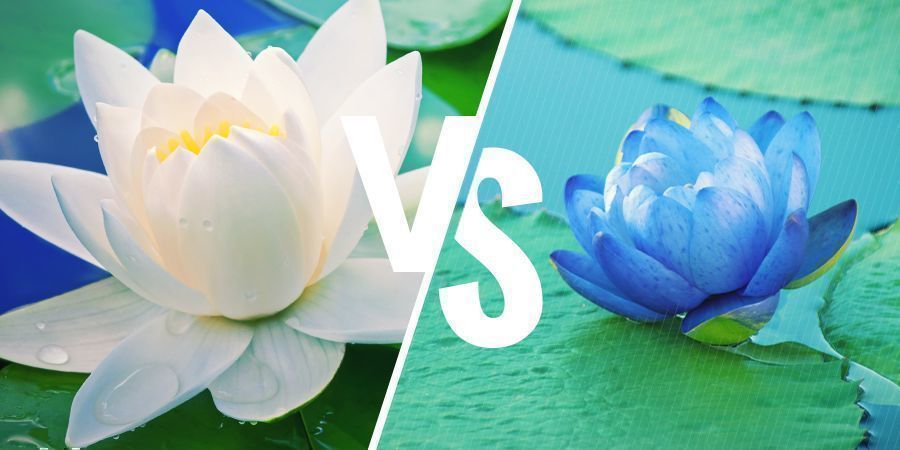
The more inquisitive psychonauts out there may be familiar with Blue Lotus, otherwise known as Nymphaea caerulea or Blue Egyptian Lotus. This species belongs to the same plant family as White Lotus, and also shares many characteristics such as appearance, habitat, and psychoactive effects.
Much like White Lotus, Blue Lotus has seen use within various ancient cultures of the world. This includes use by the Egyptians and the Mayans. Blue Lotus features flowers that are 10–15cm in diameter with pale blue petals and a bright yellow centre. Blue Lotus is believed to have originated along the Nile and within other parts of East Africa before spreading to the Indian subcontinent and Thailand.
Both of these species produce calming and euphoric states due to the presence of the psychoactive alkaloid aporphine.
WHAT ARE THE EFFECTS OF WHITE LOTUS?

The psychoactive effects of White Lotus are primarily calming and hypnotic. Users report fast-acting, euphoric effects that are initially comparable to a caffeine or nicotine rush. These effects create a shift in mood to a more positive state, and also make regular activities and tasks more pleasurable and satisfying.
These effects are made possible by the production of the alkaloid aporphine within the plant, a molecule that belongs to the class of quinoline alkaloids. The chemical is a dopamine receptor agonist, meaning it activates dopamine receptors by mimicking dopamine within the brain and producing similar effects to the native neurotransmitter, such as motivation, increased mood, and euphoria.
HISTORY OF WHITE LOTUS

The enjoyment of these psychoactive effects is far from a modern phenomenon. White Lotus is frequently depicted within Egyptian art in the form of stone carvings and paintings. It’s clear that this ancient culture highly revered both of these plant species, likely due to their fascinating psychoactive effects. These images often involve scenes of parties, dancing, and rituals.

- France
- Germany
- International
- Italy
- Netherlands
- Spain
- United Kingdom
- United States
-
€ 8,95 € 6,71+5 Extra Gift Points
-
€ 7,95 € 6,76
-
€ 17,95 € 14,36
-
€ 4,99 € 4,24+3 Extra Gift Points
You might also like
-

 4 min
21 January 2022
Top 10 Tobacco Alternatives For Spliffs
Tobacco helps spliffs to burn evenly and slowly, but the high nicotine content can cause users to become overstimulated. Why not explore the vast world of herbs for a fitting alternative? The 10 plant ...
4 min
21 January 2022
Top 10 Tobacco Alternatives For Spliffs
Tobacco helps spliffs to burn evenly and slowly, but the high nicotine content can cause users to become overstimulated. Why not explore the vast world of herbs for a fitting alternative? The 10 plant ...
-

 4 min
5 February 2019
9 (Legal) Drugs That Will Induce a Psychedelic Trip
While most psychedelic substances are considered illegal in many countries, there are a few that buck the trend. From plants of the rain forest used for powerful psychedelic brews, to the mystical Mor ...
4 min
5 February 2019
9 (Legal) Drugs That Will Induce a Psychedelic Trip
While most psychedelic substances are considered illegal in many countries, there are a few that buck the trend. From plants of the rain forest used for powerful psychedelic brews, to the mystical Mor ...
-
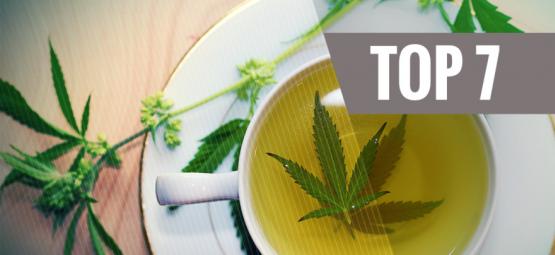
 4 min
11 April 2018
Top 7 Psychedelic Teas You Can Make At Home
In today's world, psychonauts are deciding to be a bit more classy. It's time to organize a 'High' tea with mates, with one of these 7 psychedelic teas. ...
4 min
11 April 2018
Top 7 Psychedelic Teas You Can Make At Home
In today's world, psychonauts are deciding to be a bit more classy. It's time to organize a 'High' tea with mates, with one of these 7 psychedelic teas. ...
Categories
-
Seedshop
- Feminized Cannabis Seeds
- Autoflowering Cannabis Seeds
- Regular Cannabis Seeds
- F1 Hybrids
- CBD Seeds
- Zamnesia Seeds
- Top 10 Autoflowering Seeds
- Top 10 Regular Seeds
- Top 10 USA Cannabis Strains
- Top 10 Zamnesia Seeds
- Top 10 Feminized Seeds
- Beginner Strains
- Below 1% THC
- Classic Cannabis Strains
- Cup Winners
- F1 Hybrids
- Fast-Flowering Strains
- High CBD Strains
- High THC Strains
- Mix Packs
- Zamnesia Exclusive Collabs
- Amnesia Seeds
- Blueberry Seeds
- Cheese Seeds
- Diesel Seeds
- Gorilla Seeds
- Haze Seeds
- Kush Seeds
- Purple Seeds
- Skunk Seeds
- White Widow Seeds
- Zamnesia Seeds
- ACE Seeds
- Advanced Seeds
- Amsterdam Genetics
- Anesia Seeds
- Auto Seeds
- Barney's Farm
- Big Buddha Seeds
- Bomb Seeds
- BSB Genetics
- BSF Seeds
- Buddha Seeds
- Bulldog Seeds
- Cali Connection
- Cannarado Genetics
- CannaBioGen
- CBD Crew
- CBD Seeds
- Compound Genetics
- The Dank Seeds
- Dark Horse Genetics
- Delicious Seeds
- Devil Harvest Original
- Dinafem
- DNA Genetics
- Doctor's Choice
- Dr. Underground
- Dutch Passion
- Elite Seeds
- Eva Seeds
- Exotic Seed
- Expert Seeds
- FastBuds
- Female Seeds
- Fenocan
- Flash Auto Seeds
- French Touch Seeds
- Garden of Green
- GeneSeeds
- Genehtik Seeds
- G13 Labs
- Grass-O-Matic
- Greenhouse Seeds
- Grow Your Own (DNA)
- Growers Choice
- Homegrown Fantaseeds
- House of the Great Gardener
- Humboldt Seed Company
- Humboldt Seed Organization
- Kalashnikov Seeds
- Kannabia
- The Kush Brothers
- Light Buds
- Little Chief Collabs
- Medical Seeds
- Ministry of Cannabis
- Mr. Nice
- Nirvana Seeds
- Original Sensible
- Paradise Seeds
- Perfect Tree
- Pheno Finder
- Philosopher Seeds
- Positronics Seeds
- Purple City Genetics
- Pyramid Seeds
- Rare Dankness
- Reggae Seeds
- Reserva Privada
- Resin Seeds
- Ripper Seeds
- Royal Queen Seeds
- Sagarmatha Seeds
- Samsara Seeds
- Seedstockers
- Sensation Seeds
- Sensi Seeds
- Serious Seeds
- Silent Seeds
- Soma Seeds
- Spliff Seeds
- Strain Hunters
- Sumo Seeds
- Super Sativa Seed Club
- Super Strains
- Sweet Seeds
- T.H. Seeds
- Top Tao Seeds
- Vision Seeds
- VIP Seeds
- White Label
- World Of Seeds
- Zativo Seeds
- Seed Banks
-
Headshop
-
Vaporshop
-
Healthshop
-
Smartshop
- Top 10 Smartshop
- Zamnesia Gift Cards
- After Party
- Aphrodisiacs
- Aromatherapy
- Blue Lotus
- CBD Vape Juice
- Capsule Machines
- Crystals, Gemstones & Minerals
- Dream Herbs
- Drug Tests
- Extracts
- Happy Caps
- Herbal Tea
- Herbs & Seeds
- Incense
- Kanna
- Kratom
- LSA Seeds
- Mescaline Cacti
- Microdosing
- Nootropics
- Relaxing
- Salvia divinorum
- Smart Seeds
- Stimulants
- Supplements
- Tinctures
- Vape Herbs
-
Shroomshop
-
Growshop
- Top 10 Growshop
- Top 10 Plant Seeds
- All Seeds
- Cacti
- Chili & Pepper Seeds
- Companion Plants
- Edible Plant Seeds
- Exotic Seeds
- Flower Seeds
- Fruit Seeds
- Herb Seeds
- Interior Plant Seeds
- Microgreens
- Psychoactive Plant Seeds
- Sprouting
- Vegetable Seeds
- Wellness Plant Seeds
- After Harvest
- Climate Control
- Fertilizer
- Grow Tents
- Harvest, Dry & Cure
- LED Grow Lights
- Plant Seeds
- Propagation
-
Merchandise
-
Sale section
Account
Information
Our Offers
Our website won't work without these cookies activated. Therefore functional cookies can't be disabled.



















